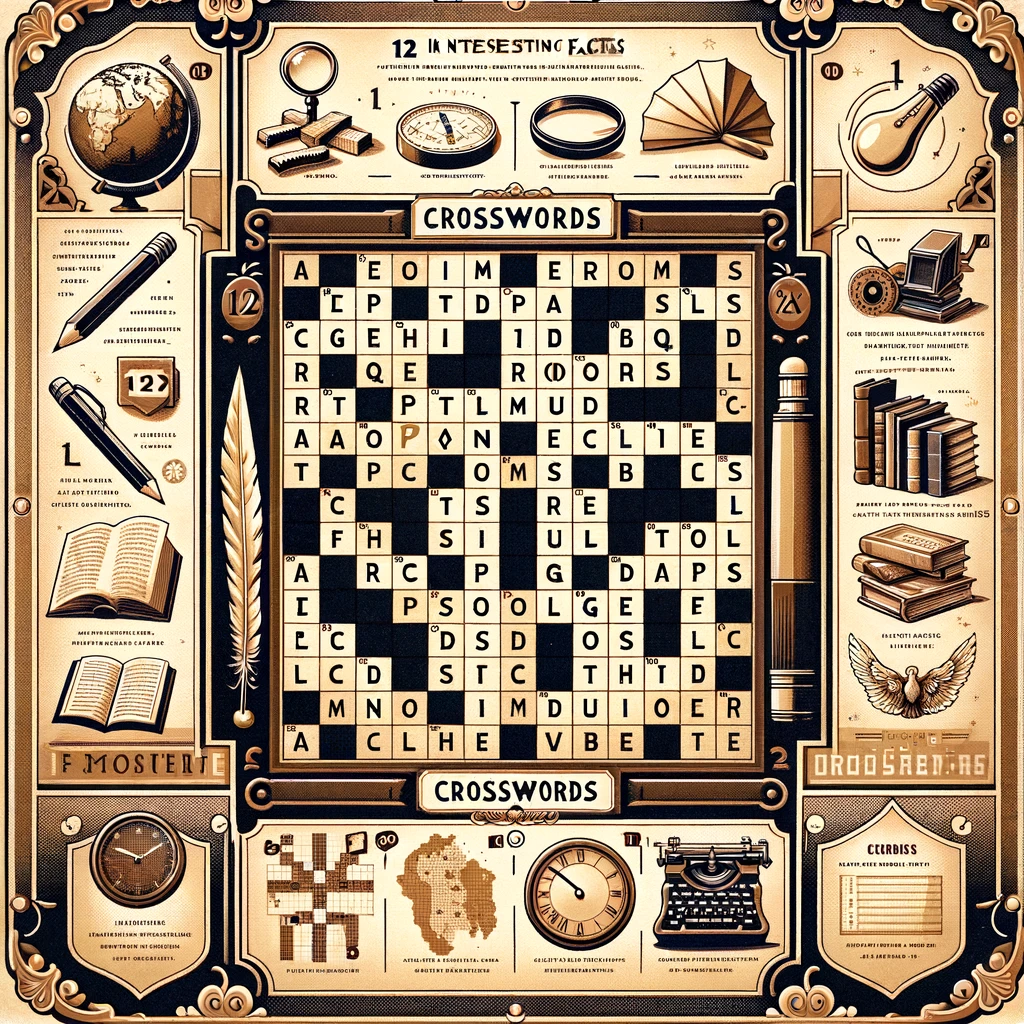Crossword puzzles, a beloved pastime for millions around the world, have a fascinating history and are surrounded by interesting trivia that extends beyond their appearance in newspapers and puzzle books. Here are some captivating facts and trivia about crossword puzzles that might pique your interest:
- The Birth of Crosswords: The first crossword puzzle was created by Arthur Wynne, a journalist from Liverpool, England. It was published in the New York World newspaper on December 21, 1913. This puzzle was shaped like a diamond and did not have black squares that we see in today’s crosswords.
- A Varied Name: The original name given by Arthur Wynne to the crossword puzzle was “Word-Cross Puzzle.” Due to a typesetting error, it became “Cross-Word,” and the name stuck.
- Crosswords in Times of War: During World War II, the British intelligence service MI5 recruited individuals who were adept at solving The Daily Telegraph’s crossword puzzles. They believed these individuals could help crack complex German codes.
- The Puzzle That Predicted D-Day: In May 1944, prior to the Allied D-Day invasion of Normandy, The Daily Telegraph crossword contained answers like “Omaha” and “Overlord,” which were code names for the invasion plans. This coincidence led to an investigation by MI5, though it was eventually deemed to be just that—a coincidence.
- First Flight Entertainment: The first in-flight entertainment system on an airplane, offered by TWA in 1961, included a crossword puzzle in the magazine provided to passengers.
- Crossword Mania: The popularity of crossword puzzles surged in the 1920s, leading to a “crossword craze” that saw puzzles being published in almost all American newspapers and the emergence of the first crossword puzzle book.
- A Library of Congress First: The first book ever to be printed with a typewriter was a compilation of crossword puzzles, published in the early 1920s.
- Educational Tool: Educators have found crossword puzzles to be effective tools for teaching vocabulary and concepts in a fun and engaging way. They are used across a wide range of subjects including language arts, history, science, and math.
- Crosswords in Court: In 1925, the New York Times criticized crosswords as a “sinful waste” of time. Ironically, the New York Times would go on to publish some of the world’s most famous crossword puzzles, starting in 1942, and eventually becoming a cornerstone of American culture.
- The Longest Crossword Clue: The record for the longest crossword clue belongs to a clue in the 1997 Guinness Book of World Records crossword, which contains 58 words.
- A Symbol of Peace: A giant crossword puzzle was painted on the side of a building in Lviv, Ukraine. During the day, the puzzle appears unsolved, but at night, answers light up via a special installation, covering a range of topics from the city’s history to general knowledge.
- Crossword Tournaments: The American Crossword Puzzle Tournament is an annual event that attracts hundreds of solvers. It was founded by Will Shortz, the crossword editor for The New York Times, in 1978.
These facts illustrate not only the rich history of crossword puzzles but also their impact on culture, education, and even international events. Crossword puzzles continue to challenge and entertain people of all ages, proving that this century-old pastime has enduring appeal.
